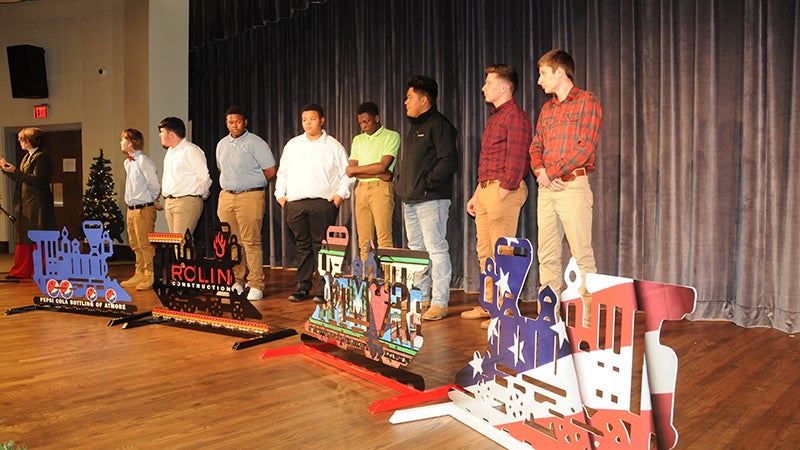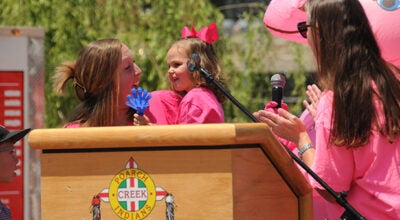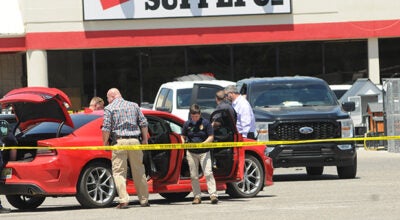Trains unveiled for art walk project
Published 12:06 am Wednesday, December 18, 2019
|
Getting your Trinity Audio player ready...
|
“If Pensacola (Fla.) can have pelicans, why can’t Atmore have trains?”
That was one question that turned into reality as officials unveiled the second phase of Atmore’s Art Walk at Escambia County High School Tuesday morning.
The second phase includes the installation of metal trains and bike racks throughout downtown. The art walk is an interactive tour of the Atmore area featuring both temporary and permanent art installations intended to promote tourism, boost commerce, encourage healthy lifestyles, promote seniors, educate children, inspire the community, bring together all demographics and spur workforce development through bringing attention to the public school system while educating those students currently enrolled in the skilled labor curriculum and connecting them with local industry, according to the Atmore Area Chamber of Commerce.
Chamber Executive Director Emily Wilson said the project, which includes a total of 17 metal pieces — 12 trains and five bike racks — was funded by a grant from the Gulf Coast RC&D Council.
Wilson said the grant went toward paying for the materials, all locally sourced. The metal used to cut the trains and racks came from Esco Fab Inc., she said, adding that John’s Paint & Body in Atmore prepped and powder coated the trains and Landis Design Co. placed the covers on each of the trains and racks.
A big part of the effort came from seven students at ECHS, who cut and designed the trains and racks.
Welding Instructor Lee Jernigan said he contacted Wilson, who told him she wanted a train.
“I printed her out a little bitty one for her desk,” Jernigan said. “At that point, I brought in (student) Joey Ramer, and we took it from a fairy tale concept to this one.”
Jernigan said Ramer learned the CnC Machine by himself. A CnC Machine was used to design and cut the trains.
“He figured it out, and did an amazing job,” Jernigan said. “He did most of the welding.”
Jernigan recognized other students in the group who helped with the cutting and grinding as well.
“The kids jumped in and took ownership of the project,” he said.
Jernigan said the welding class has four more bike racks to finish up. Several more trains — other than the four on display Tuesday — are finished, he said.
“I appreciate everybody in Atmore supporting these students,” he said. “The biggest thing I wanted to do is show Atmore that these kids can work.”
Rep. Alan Baker said he couldn’t be more pleased with how the project came together.
“This gives me bumps and chills with all the work and planning that went into this,” Baker said.
Escambia County District 3 Commissioner Scottie Stewart said the council was glad to support the project.
“All of us, most of us in this room, are not getting any younger,” he said. “This is the future of the community. The art work is fabulous.”
Principal Dennis Fuqua said this project is a good example of the skills the students gained.
“They and their families will never go hungry because they know how to work and see it through,” Fuqua said. “They’re going to make a living and be productive Atmore citizens.”
The Gulf Coast RC&D council provides grant opportunities for non profit organizations to implement projects for community development, conservation education and natural resources conservation. The council serves Mobile, Baldwin and Escambia Counties, and the Poarch Creek Indians.





